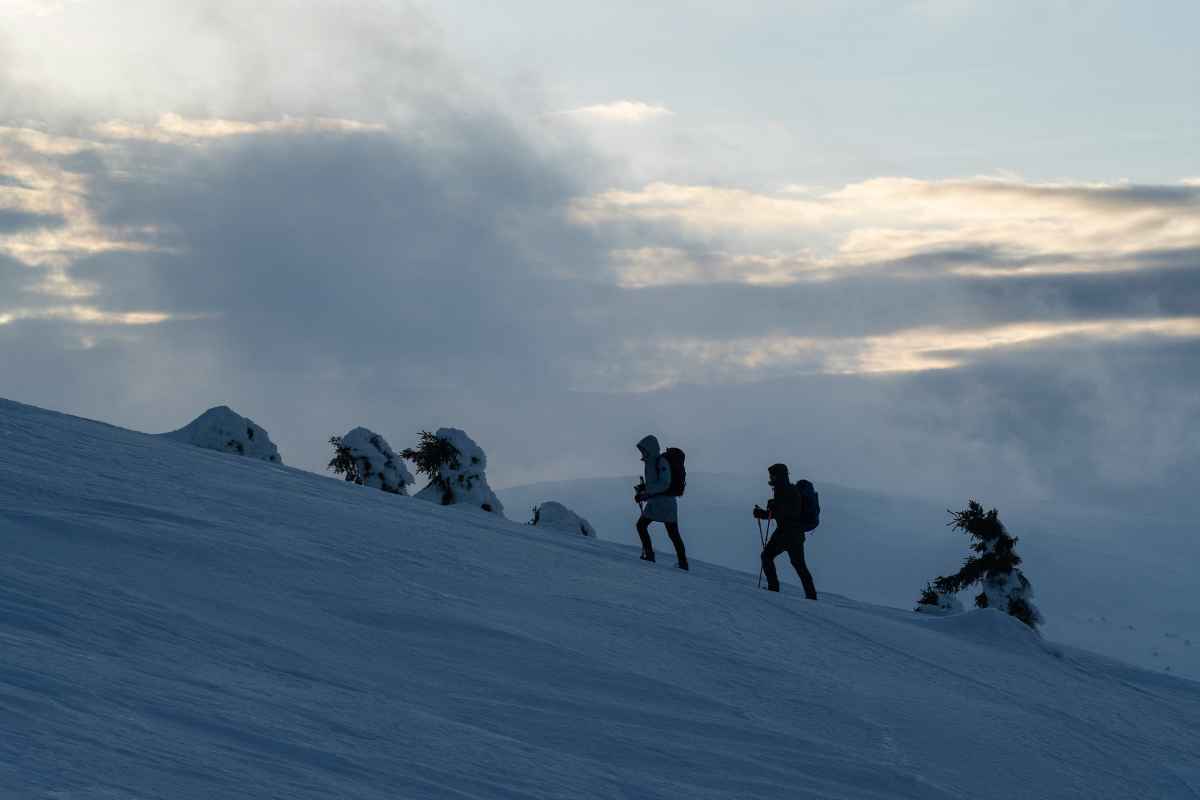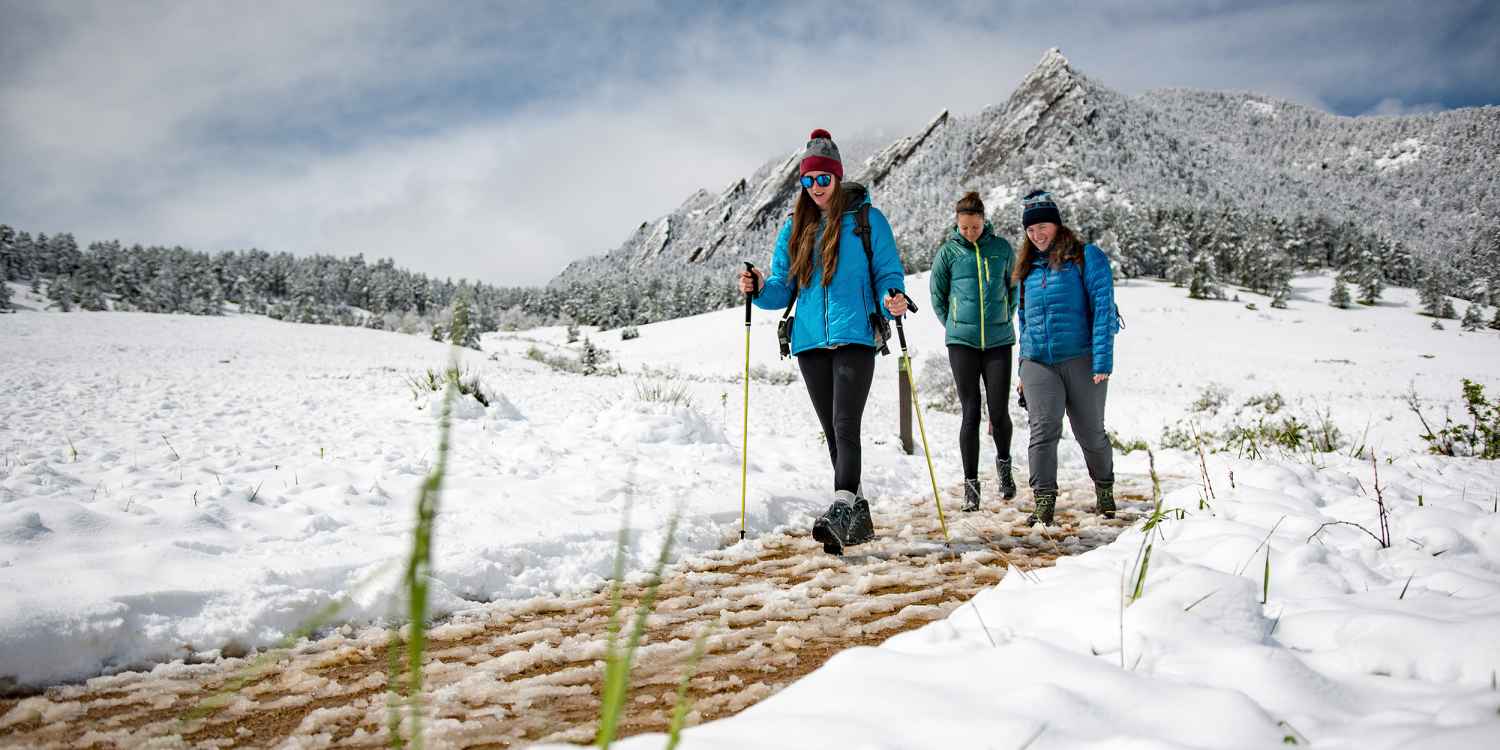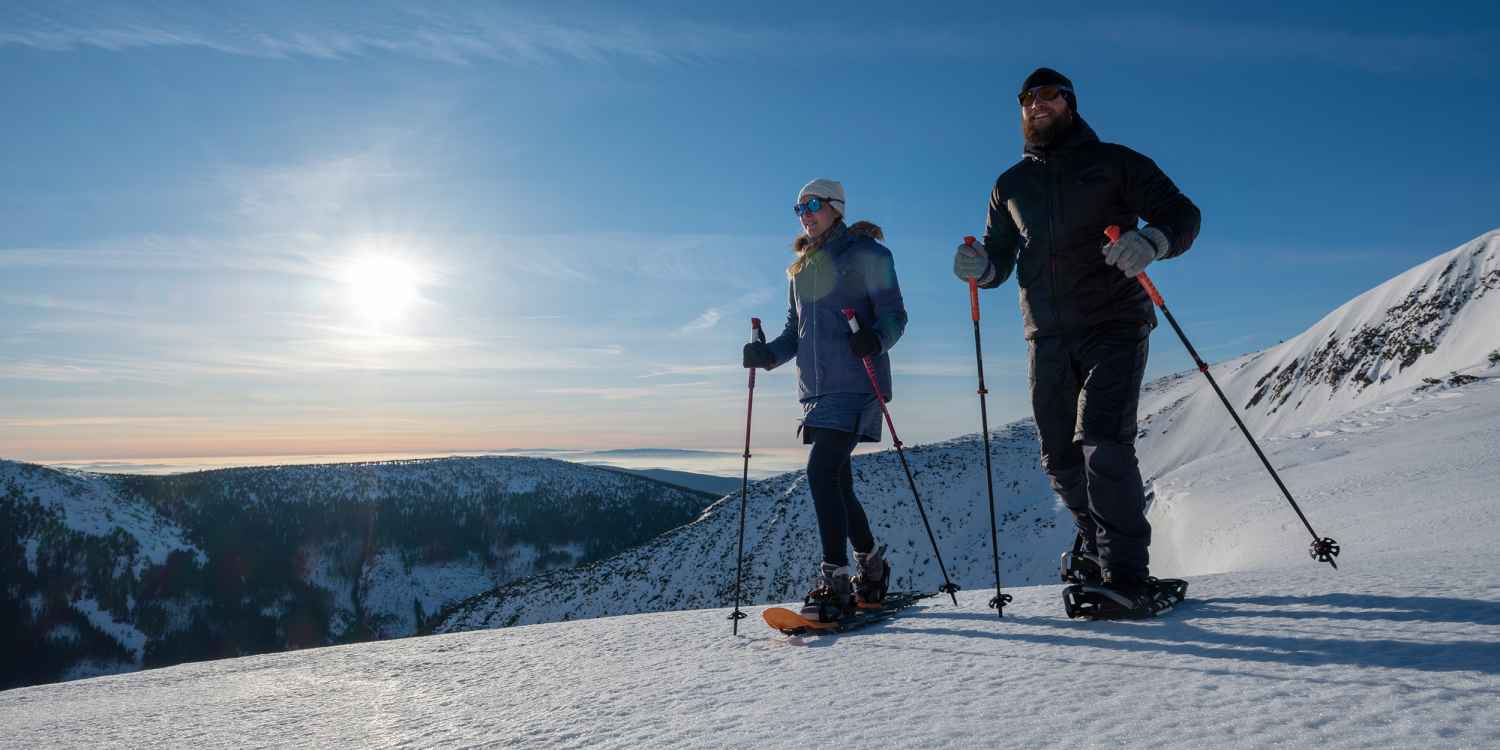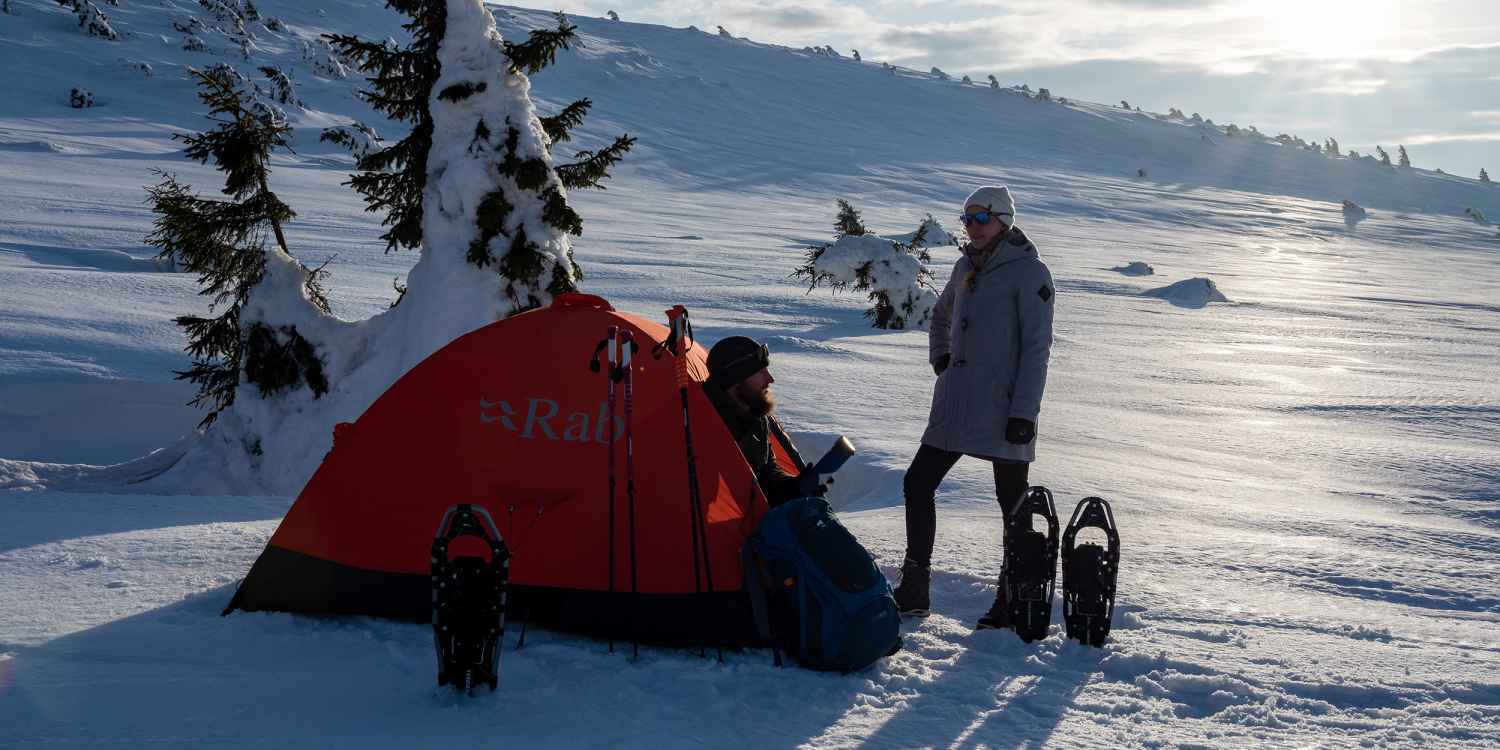To ensure that your planned winter tour does not turn into a forced march, you need to follow some advice and make certain compromises. There are a number of specifics to planning a winter hiking tour. Snow-covered trails and paths are much more strenuous to negotiate than in the summer. Snow and ice also transform many a familiar forest trail into an unpleasant sliding experience. An early sunset – it often gets dark at 4 pm – also reduces the time buffer available if you take a wrong turn or make a detour. The distances that you are planning to cover during the tour also need to be matched to local circumstances and to your own physical fitness – and be significantly reduced. Here it’s worth being honest with yourself! You’re better off reaching your destination faster than planned on your first tour, and then you can plan to cover a greater distance the next time. A good starting point for all winter hiking novices is to select a route that is roughly half the distance that you would hike during the summer.
Winter hikes A freezing experience

Hiking in winter?
Yes, you read that correctly! Even if rainy autumn storms are announcing the end of summer, that is no reason to put your affinity with nature on hold until the following spring. The fourth season offers plenty of advantages: things are quieter, and the sun is not quite so relentless. Anybody who is too tempted to spend the winter on the sofa is missing out on wonderful adventures.

Preparation for the activity An enjoyable hike instead of a forced march

Shoe selection Top priority: Safety and warm feet
Suitable winter footwear plays a particularly key role, as it is the primary point of contact with the ground beneath your feet. A proper winter hiking boot is at least ankle-high, robust and features a rigid sole design with a distinctive profile. It’s entirely up to you whether you opt for specially lined winter footwear or prefer to wear thicker socks in the boots that you are used to.

Preparation for the activity Make sure your soles are in order and get out there on the trail
At some stage even the best “winter footwear sole” is stretched to its limits. Ice underfoot and steep, snowed-up trails can prove too much even for the Vibram Arctic Grip®. If you don’t want your adventure to end prematurely, then a good bet is to wear mini crampons. These flexible traction accessories are the kid brother of the crampon and provide the necessary purchase in wintry conditions underfoot. However, they can never be considered a 1:1 substitute for crampons!
Snowshoes provide another safe option: their wide contact areas prevent wearers from sinking too deep into snow and enable them to cross even the deepest snowfields. Snowshoes are available in a range of different finishes and fastenings and can be used with practically all LOWA sturdy winter shoes.

Preparation for the activity Before setting off: pay attention to weather reports
All too often, the weather in mountain regions is very changeable. The weather plays a particularly important role in winter. During the cold season a short snow shower can quickly turn into a snowstorm, and in the mountains, there is also the risk of avalanches.
So, you should closely monitor the weather conditions from the start of your planning phase, at regular intervals and before you commence your hiking tour. Even en route, you should always keep your eye on the skies.

On the go Orientation in winter
The natural environment is a wonderful sight when blanketed in glistening snow. Everything is soft and white – and too much of it looks alike. Getting your bearings when hiking can be tricky, especially in winter. Trail markings often disappear quickly beneath the blanket of snow – as do potential hazards in the form of slopes, potholes and loose boulders and rocks. So particular watchfulness is called for. In order to be able to enjoy a winter hiking tour to the full, it is vital to have up-to-date maps and a GPS device with you. If you want to play it very safe, remember to take replacement rechargeable (for a mobile phone) and normal batteries. Biting cold virtually siphons off the power in these devices. Shorter days should not be underestimated. Less daylight may mean less time to backtrack when taking a wrong turn. So taking a good head lamp with you is an absolute must!

On the go Breaks and provisions
Long walks along snow-covered trails and paths definitely makes you break sweat. It is therefore often tempting to take a longer break to recover. But beware: If you do not have hot drinks or additional layers of clothing, you can get hypothermia very quickly! You will almost inevitably catch a cold. Instead, it is better to take several short breaks, during which your body can’t cool down completely.
